Plan your Suzhou tour? We’ve rounded up a list of the top 10 attractions in Suzhou, which may be helpful for your planning your short trip to Suzhou.
Suzhou is located on the lower reaches of the Yangtze River and on the shores of Taihu Lake in the province of Jiangsu Province, China.
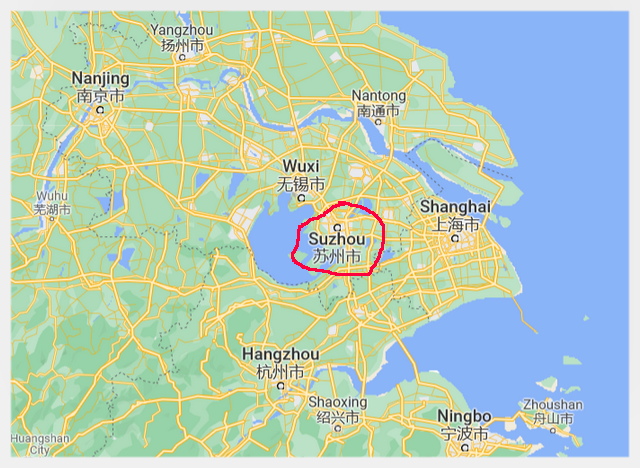
Suzhou is renowned for its world famous private gardens – stone bridges, pagodas, lakes, rockeries and traditional architectures and meticulously designed gardens which have contributed to its status as a great tourist attraction.
In 1997 and 2000, eight of the finest gardens in Suzhou along with the ancient water town of Tongli were selected by UNESCO as a World Heritage Site to represent the art of Suzhou-style classical gardening.
Suzhou enjoys great fame internationally for its elegant gardens. It is said that the gardens to the south of Yangtze River are the best in the world, and Suzhou gardens are the best among them. Suzhou attracts many visitors both home and abroad every day.
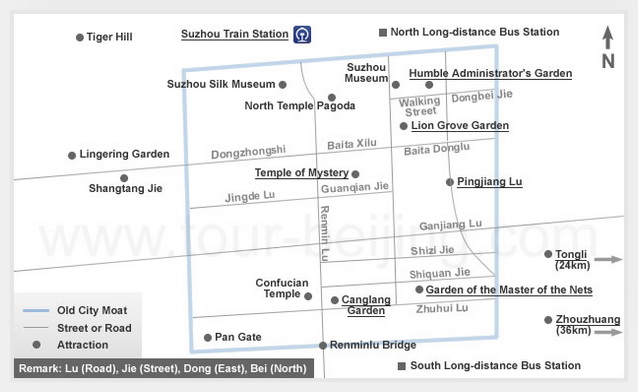
Now follow us to have a virtual tour of the top 10 attractions in Suzhou.
1. Humble Administrator’s Garden 拙政园
Humble Administrator’s Garden is representative of Chinese classical gardens in the Ming Dynasty, which are focused on a central pond with pavilions. At 51,950 m2, it is the largest garden in Suzhou and generally considered the finest garden in southern China.
For more information, check out the link: How to Visit Humble Administrator’s Garden.
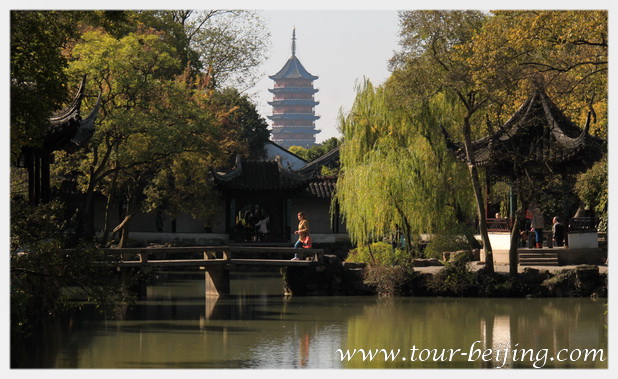
The Humble Administrator’s Garden was a scholar garden during the Tang dynasty and a monastery garden during the Yuan dynasty. It then changed hands many times.The structures are grouped round a labyrinthine lake, rather like a Chinese water village. The garden consists of Eastern, Central and Western sections as well as some residences of the former owners.
The Humble Administrator’s Garden is easily accessible by public buses – Tourism Bus No.01, Tourism Bus No.02, Bus No.313 and get off at the stop of Suzhou Museum (苏州博物馆) since Suzhou Museum is very close to both the Administrator’s Garden and the Lion’s Forest Garden.
Entrance Fees
Off-season: 70 yuan/person (January, February, March, June, November, December)
Peak Season: 80 yuan/person in peak season (April, May, July, August, September, October)
Opening Hours
7:30~17:30 (March 1 ~ November 15) and 7:30~17:00 (November 16 ~ February 29).
2. Tongli Ancient Town 同里古镇
If you plan Suzhou tour, don’t miss a side trip to Tongli. Tongli Town (同里)is one of the famous ancient water towns in the Yangtze River Delta, which are specifically scattered around the large river and crisscross the triangle area of Suzhou, Huzhou, Hangzhou and Shanghai.
For more information, check the link: How to Visit Tongli Ancient Town.
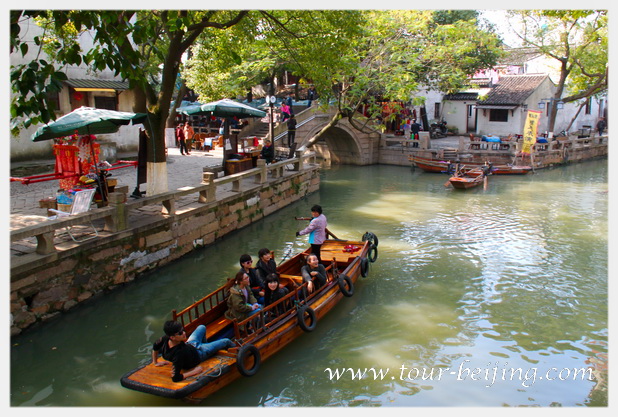
The ancient Tongli Ancient Town has a history of over 1000 years, a typical water town in the Yangzte River area. The ancient town is scenic enough to be surrounded by waters. The town is cut into 7 islands by 15 canals which are linked by 45 bridges. It is reputed as “the Venice of the East”.
In 1997 and 2000, eight of the finest gardens in Suzhou along with the ancient water town of Tongli were selected by UNESCO as a World Heritage Site to represent the art of Suzhou-style classical gardening.
3. Tiger Hill 虎丘
Tiger Hill, which is located at the northwestern suburb of Suzhou, is a popular tourist destination and is known for its natural beauty as well as historical sites. The hill is so named because it is said to look like a crouching tiger. The Tiger Hill covers about 14,100 square metres and is 36 metres in height.
The Tiger Hill includes Tiger Hill Pagoda, Sword Testing Stone and Sword Pool, Lu Yu Well, Verdant Mountain Villa and Wanjing Villa.
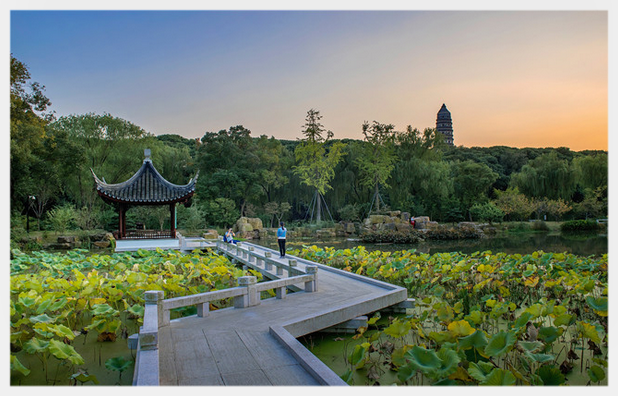
Tiger Hill Pagoda is just a another version of Pisa, a leaning in Italy, an iconic structure, but you cannot go inside the pagoda but nice viewing and picture opportunities.
The hill has been a tourist destination for hundreds, if not thousands, of years, as is evident from the poetry and calligraphy carved into rocks on the hill.
Entrance Fee: CNY 70 (peak seasons); CNY 60 (low seasons)
Opening Hours: 07:00-17:00
How to get there: take Buses No. 949, 146, 316, 816, Y 7, Y 2 or Y 3 to the south gate of the Tiger Hill; or take Buses No. 32 or 36 to the north gate of the Tiger Hill
4. Hanshan Temple 寒山寺
Hanshan Temple is a Buddhist temple and monastery in Suzhou which is located at the town of Fengqiao ( Maple Bridge), about 5 kilometres west of the old city of Suzhou.
It was first constructed in the Liang Dynasty (502-557). During the Tang Dynasty (618-907), a famous monk called Hanshan lived in the temple. The temple was later renamed after his name. The temple used to be one of the 10 most famous temples in China. Zhang Ji, a noted Tang-dynasty poet once wrote a poem “A Night Mooring by Maple Bridge,” which, as a result, made the temple even more famous all over China.
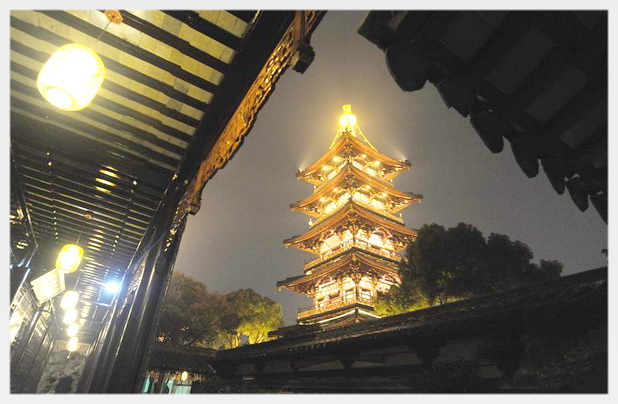
So the temple has been famous since the Tang Dynasty. The temple compound is a scene of luxuriant green creating a secluded atmosphere. The buildings in it are in an unadorned and natural style. In the center of the compound stands Mahavira Hall. Behind the hall stretches a wooden corridor, at the end of which stands a small tower with a wall behind and a stream in front.
Entrance Fee: CNY 20
Opening Hours: 08:00-17:30
How to get there: Take Tourism Bus 3, and Bus No.313, no.6, No.9, No.17, No.21, No.31, No.301 and get off at Heshan Bridge (何山大桥站).
Add: 24 Hanshan Temple Lane, Gusu District, Suzhou
5. Jinji Lake Scenic Area 金鸡湖景区
Jinji Lake Scenic Area is located in Jinji Lake business district of Suzhou Industrial Park, and about two thirds of the scenic area, precisely, 7.4 square kilometers,are covered by water. It is lauded as the first “Prototype-zone of National Business Travel” in China.
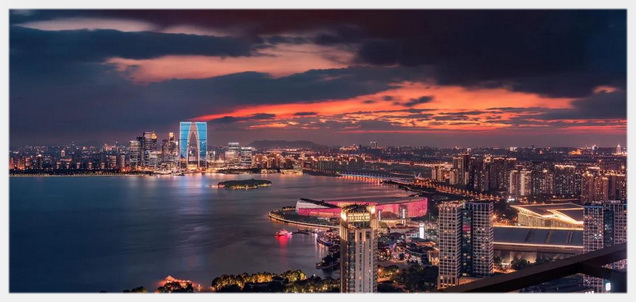
The scenic area has numerous of attractions, including the ten top the list, known as “Suzhou Center”, “The Gate of the Orient”, “Music Fountain”, “Jinji Lake Bridge”, “Culture and Arts Center”, “Moon Harbor”, “Eslite Bookstore”, “Suzhou International Finance Center”, “Lake Watching Corner” and “Ligongdi Causeway”. All the ten attractions are linked by Jinji Lake Fitness Trail which is 14 kilometers long.
Architecture around the lake is generally attractive – and dramatically illuminated in the evening. Restaurants and cafes either near the plaza or especially near the Culture & Arts Centre, also on East side (Western) or SW section. There are many places to pop in for food or a drink nearby and the area is lined with quite a few metro stations and getting here and away is a breeze.
6. Suzhou Museum 苏州博物馆
Suzhou Museum is a museum of ancient Chinese art, ancient Chinese paintings, calligraphies, and hand-made crafts, situated in Suzhou, Jiangsu, People’s Republic of China.
Most of the must-see attractions in Suzhou are walkable within the ancient city wall including the Humble Administrator’s Garden, Lion’s Grove Garden, Canglang Garden, Lingering Garden, Garden of the Master of the Nets, Suzhou Museum, and Pingjiang Road in Suzhou.
Check out Suzhou Museum for more information.
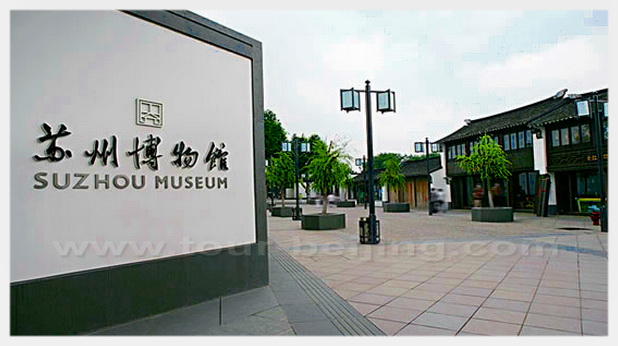
The museum has a display area of 2,200 square meters. It has more than 15,000 pieces in its collections. Most are ancient paintings and calligraphy, ceramics, crafts, unearthed relics and revolution relics.
Among them 247 pieces are ranked first-class. The collection of paintings and calligraphy includes works of masters from Song Dynasty to Ming and Qing Dynasties.Entrance Fee: free
Opening Hours: 09:00-17:00
How to get there: take Buses No. 529, 811, 55, 202 or Y 2 to the Suzhou Museum
7. Pingjiang Road 平江路 (Ping Jiang Lu)
Pingjiang Road (平江路) in Suzhou! The name “Pingjiang Road” originated from the old city name of Suzhou – “Pingjiang”.
This 800-year old street is the best preserved ancient “water lane” ( in contrast with “water town”) in Suzhou.It is a 1600 meters long street set alongside with a north-south canal, starting from East Beita Road (北塔东路) in the north to East Ganjiag Road (干将东路) in the south.You cannot find a better place in China in which modernity and tradition match hand in hand.
The 1600-meter cobblestone path runs alongside with a canal with willows dipping their branches in the water, cute little bridges that cross and all flanked by old white-washed local houses. The paddle boats rows on the canal while people stroll along the cobblestone path.
For more information, check out the link: How to Visit Pingjiang Road in Suzhou.
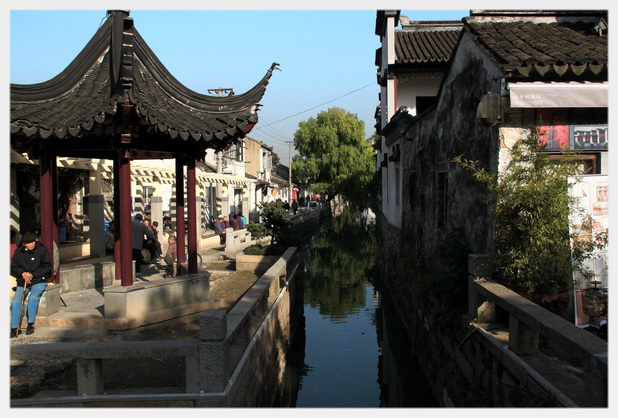
People often choose to walk along Pingjiang Road after visiting either the Humble Administrator’s Garden (拙政园) or the Lion Forest Garden (狮子林) since Pingjiang Road is located just a 10 minute-walk from both of them.
Google Maps recognizes “Pingjiang Road” as “Ping Jiang Lu”. Please note that when you google “Ping Jiang Lu”, there appears another “Ping Jiang Lu” which is far away from the Lion Grove Garden, just forget it and try to zoom out the “Ping Jiang Lu” close to the Lion Grove Garden.
8. Lion Grove Garden 狮子林
The Lion Grove Garden (狮子林) is one of the most famous gardens in Suzhou and the other three are the Humble Administrator’s Garden, Canglang Pavilion and the Lingering Garden.
The Lion Grove Garden is located at 23 Yuanlin Road (园林路)in Pingjiang District, just about 10 minutes’ walk south from the Humble Administrator’s Garden.
For more information, check out the link: How to Visit Lion Grove Garden.
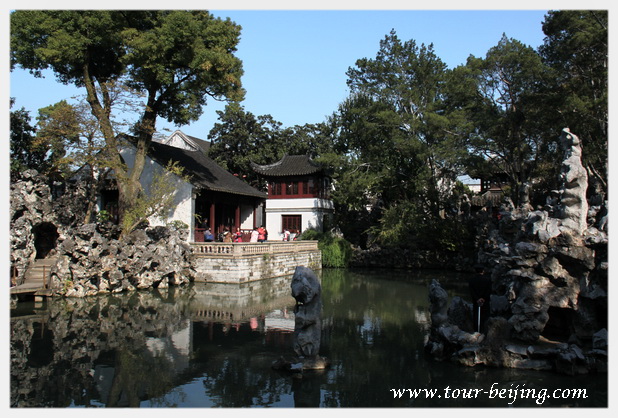
So basically you can put the famous attractions together for a half day garden tour in Suzhou. Generally people will visit Lion Grove Garden after having a walking tour of the Humble Administrator’s Garden, since the two are so quite close to each other.
9. Lingering Garden 留园
Lingering Garden (留园)is one of the most famous gardens in Suzhou and the other three are the Humble Administrator’s Garden, Canglang Pavilion and Lion Grove Garden.
It is located outside the Changmen gate of Suzhou. The Lingering Garden was built by an official named Xu Taishi in Ming Dynasty.
Covering an area of 23,310 square meters, today the Lingering Garden is separated into the four parts of the eastern, central, northern and western parts.
The four scenic spots of the Lingering Garden are of different features. They set off each other with certain connection, but distinguish from each other at the same time. The corridor connecting all the scenic spots is 700 meters long in total, winding with the topography and making the scenery endless and changeable. It is really a masterpiece of gardens in China.
Check out Suzhou Lingering Garden for more information.
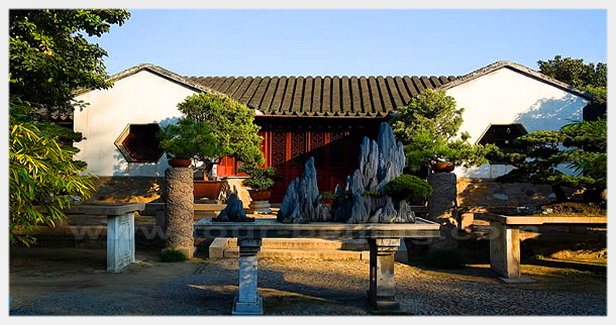
Especially in Suzhou gardens, the buildings inside Lingering Garden are not only large in number, but also densely distributed, with reasonable layout and clever space treatment. Each building has its own distinct personality, from the overall point of view, there is no sense of chaos, giving people a continuous, overall concept.
Entrance Fee: CNY 55 (peak seasons); CNY45 (low seasons)
Opening Hours: 07:30-17:00
How to get there: take Tourism Bus 1, Bus 85, Bus 317 and Bus 933, get off at the stop of Lingering Garden.
10. Canglang Pavilion 沧浪亭
Plan your Suzhou tour? Suzhou has four most famous classical gardens listed as World Cultural Site which includes Canglang Pavilion (沧浪亭). Canglang Pavilion is typical of the classical gardens in Song Dynasty (960 – 1279), the oldest private garden in Suzhou. The other three world-heritage crowned gardens are Humble Administrator’s Garden, Lingering Garden , and Lion Grove Garden.
Check out How to Visit Canglang Pavilion for more information.
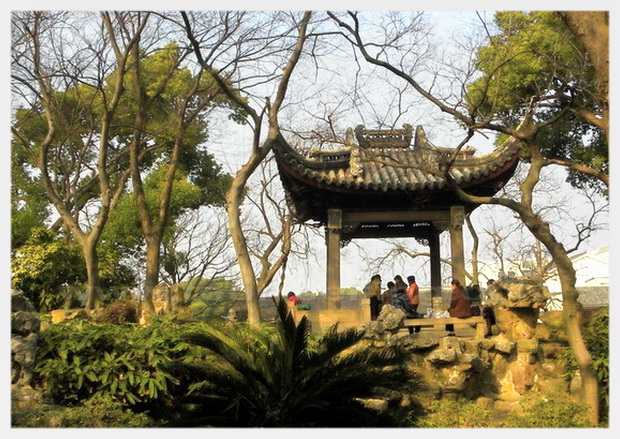
Canglang Pavilion literally means “Surging Waves Pavilion”. The garden was built in the year 1044 by the famous poet named Su Shunqing (1008–1048) in Song Dynasty.
The garden features the Song Dynasty layout and design. The name Canglang originates from a verse in a poem written by Qu Yuan (340 BC-278 BC). Qu Yuan wrote the verse to allude to an honest official who rather resign from his office than do in a corrupt way.
Su Shunqing (苏舜钦) used the verse to express his emotion after his removal from office. In Northern Song Dynasty ( 960 -1279). In 1044, He was removed from office and and settled down in Suzhou. He later bought the abandoned the land and built a garden named “Canglang Pavilion”. He often sailed a boat for playing. Often with Ouyang Xiu, Mei Shengyu and so on to write poems. Since then the name of Canglang spread.
The ownership of the garden changed many times and went through a bunch of renovations and revamping. The garden was opened to the public in 1955 and in 2000 it was listed the UNESCO world cultural heritage site together with other three classical gardens in Suzhou.
Tip: Hassle-free Jiangsu Guided Tours
If you don’t want to do a self-guided tour and prefer the hassle-free escorted tours, here are some options for organized tours to Jiangsu Province:
Suzhou Tour
Nanjing Tour
Jiangsu Tour
Further Readings
Top 10 Attractions in Suzhou
How to Visit Tongli Water Town
How to Visit Zhouzhuang Water Town
How to Visit Pingjiang Road in Suzhou
How to Visit The Garden of the Master of the Nets
How to visit Humble Administrator’s Garden
How to Visit Lion Grove Garden
How to Visit Canglang Pavilion
How to Visit Guanqian Street in Suzhou
4 Amazing Short Trip Ideas from Shanghai
Wuzhen Pictures – Wuzhen Photo Gallery
Zhouzhuang Pictures – Zhouzhuang Photo Gallery
Top 10 Attractions in Nanjing
How to Visit Nanjing Massacre Memorial Hall
How to Visit Nanjing Confucius Temple-The Qinhuai River Scenic Area
How to Visit Zhonghua Gate Nanjing
How to Visit Nanjing Yangtze River Bridge
How to Visit Linggu Temple Scenic Area
Sun Yat-sen Mausoleum Music Stage
How to Visit Dr. Sun Yat-sen’s Mausoleum
How to Visit Ming Xiaoling Mausoleum
How to Visit Nanjing Presidential Palace
Nanjing South Railway Station
Nanjing Taxi: Nanjing Taxi Fares, Tips and Phones
Suzhou Railway Station
Suzhou Taxi: Suzhou Taxi Fares, Tips and Phones
Any questions, just drop a line.






Where to take the bus? Eg:take bus1, 2,or 5.pls let me know from where take the bus? What station?
Hello Stacey,
Please see the tourist sketch map of Suzhou below:
http://www.tour-beijing.com/suzhou_tour/
1. Bus No.01 & 4 runs along Renmin Road ( the north-south axis of Suzhou )
2. Bus No.5 runs between west and and east with a stop at Suzhou Museum
3. Bus No.2 runs from Tiger Hill, Pan Gate and along Shiquan Jie ( Shiquan Street – the most comemrcial street in Suzhou ).
Suzhou has so many places to visit. There is also a big expat community in Suzhou so lots of bars, restaurants and clubs to check out in the evening. If you get the Subway Line 1 to Xinghai square. There are lots of restaurants in the Subway station. If you come out of Exit 2, there is Revel Fusion Lounge just around the corner above Singhealth. Camel bar is up the road opposite Element Fresh. Also down the road is Blue Marlin. Nearby is Lenbach German bar and restaurant. All these places are friendly and you can meet local expats.
What are the different dates for Peak Season and Low season?
Hello AJ Tjaden,
As for tourism in China, roughly, spring and autumn( April, May, Sept and Oct ) are peak season; winter (Dec, Jan, Feb ) is low season and summer ( June,July and August) is shoulder season.
hai i will reach suzhou on 18.9.2014 in the afternoon and will stay at suzhou on 19.9.2014 and will go to hangzhou in the afternoon.
Which the places i can visit and if i want to join a local tour how much i need to pay.
Thank you.
Hello June,
Currently we have no organized join-in group tours in Suzhou. We are able to offer a customized private tour for you in Suzhou. For more information on the private tours in Suzhou, check out the link below:
http://www.tour-beijing.com/suzhou_tour/
Suzhous is compact and walking-friendly. You may check online for the practical travel information on Suzhou and visiting Suzhou on your own. You check my Suzhou travel blog for some useful information.
http://www.tour-beijing.com/blog/jiangsu-travel/suzhou-travel/
Have a good time in Suzhou!